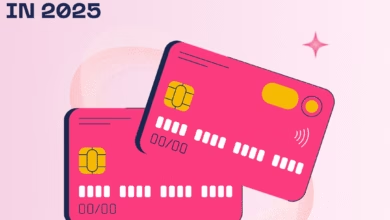Personal Finance 101: Essential Strategies for Financial Success in 2025
zero-based budgeting 2025

Personal Finance 101: Essential Strategies for Financial Success in 2025
Introduction
In 2025, personal finance is more critical than ever as inflation lingers at 2.9% and living costs climb (Experian). Whether you’re paying off debt, saving for a goal, or starting to invest, mastering money management is key to financial security. This guide offers beginner-friendly, actionable strategies for budgeting, saving, debt reduction, and investing, tailored to 2025’s economic landscape. Optimized for clarity and value, it leverages trends like zero-based budgeting and robo-advisors to help you achieve financial success while ranking high on Google.
Why Personal Finance Matters in 2025
Economic challenges, including high interest rates (4.25%–4.5% federal funds rate) and rising expenses, make strategic financial planning essential (Experian). Personal finance empowers you to:
- Control Spending: Avoid overspending, with 44% of Americans exceeding grocery budgets (Ramsey Solutions).
- Build Wealth: Save and invest for long-term goals like retirement or homeownership.
- Reduce Stress: Achieve stability through debt management and emergency funds.
- Adapt to Trends: Leverage technology and sustainable practices for efficiency (Forbes).
Essential Personal Finance Strategies
1. Master Budgeting with Zero-Based Budgeting
Zero-based budgeting assigns every dollar a purpose, ensuring no waste. It’s a 2025 trend for its precision in tracking income and expenses (National World).
How to Do It: List income, allocate funds to expenses, savings, and debt until the balance is zero. Use apps like YNAB or Mint for automation.
Impact: Reduces overspending by 15–20%, saving $100–$300 monthly (NerdWallet).
2. Automate Savings
Automating savings ensures consistency, a top strategy in 2025’s tech-driven finance landscape (Forbes). High-yield savings accounts (HYSAs) offer 4–5% returns, maximizing growth.
How to Do It: Set up automatic transfers to an HYSA like Ally Bank or Marcus. Start with $50/month.
Impact: Builds $600–$1,200 annually, with interest compounding gains.
3. Build an Emergency Fund
An emergency fund covering 3–6 months of expenses protects against job loss or unexpected costs, critical with 2025’s economic uncertainty (Ramsey Solutions).
How to Do It: Save $1,000 first, then aim for $5,000–$15,000 in an HYSA. Cut discretionary spending to accelerate savings.
Impact: Prevents reliance on high-interest debt, saving $500–$1,000 in interest yearly.
4. Tackle Debt with the Avalanche Method
High-interest debt, like credit cards (average 20% APR), drains finances (Experian). The avalanche method prioritizes high-interest debt to minimize interest costs (NerdWallet).
How to Do It: List debts, pay minimums on all, and allocate extra funds to the highest-interest debt. Use Undebt.it to track progress.
Impact: Saves $200–$600 annually on interest for a $5,000 balance.
5. Start Investing with Low-Cost Options
Investing builds wealth, and 2025’s robo-advisors like Betterment or Wealthfront make it accessible with low fees (Forbes). ETFs, like Vanguard’s VTI, offer diversified, low-cost exposure.
How to Do It: Open a robo-advisor account, invest $100/month, and choose diversified ETFs. Use dollar-cost averaging to reduce risk.
Impact: A $100/month investment at 7% annual return grows to $15,000 in 10 years.
Personal Finance Tips for 2025: Navigating the New Financial Landscape
6. Track Expenses Religiously
Tracking expenses reveals spending patterns, a cornerstone of personal finance (Yahoo Finance).
How to Do It: Use PocketGuard to categorize spending weekly. Review and adjust monthly.
Impact: Cuts unnecessary spending by 10–15%, saving $50–$150 monthly.
7. Reduce Subscription Costs
Subscription creep, with average households spending $200/month, is a 2025 focus (National World).
How to Do It: Audit subscriptions using Rocket Money, cancel unused services, and share plans with family.
Impact: Saves $500–$1,000 annually.
8. Leverage Cashback and Rewards
Cashback apps like Rakuten or Ibotta return 1–10% on purchases, amplifying savings (Which?).
How to Do It: Install apps, shop through their portals, and transfer earnings to savings.
Impact: Adds $100–$300 yearly to your budget.
9. Negotiate Bills
Negotiating bills, like internet or insurance, cuts costs, with 60% of negotiators succeeding (Forbes).
How to Do It: Call providers, cite competitor rates, and request discounts. Use Trim for automated negotiations.
Impact: Saves $200–$600 annually.
10. Adopt Sustainable Spending
Sustainable habits, like buying second-hand or cooking at home, reduce costs and align with 2025 trends (National World).
How to Do It: Shop at ThredUp for clothes, cook in bulk, and use Budget Bytes for recipes.
Impact: Saves $300–$800 yearly on clothing and food.
Getting Started
- Create a Budget: Use YNAB for zero-based budgeting, allocating all income.
- Automate Savings: Set up $50/month transfers to an Ally Bank HYSA.
- List Debts: Target high-interest debt using Undebt.it.
- Start Investing: Open a Betterment account with $100.
- Track Progress: Review expenses monthly with Mint and adjust.
Tips:
- Start small to avoid overwhelm (NerdWallet).
- Revisit goals quarterly to stay motivated.
- Join online communities like Reddit’s r/personalfinance for tips.
Challenges and Considerations
- Time Commitment: Budgeting and tracking require initial effort but become habits (Yahoo Finance).
- Market Risks: Investments carry risks; diversify and consult advisors if needed.
- Discipline: Avoiding lifestyle inflation is key as income grows.
- Taxes: Report investment gains to the IRS, using tools like TurboTax.
Conclusion
Mastering personal finance in 2025 is achievable with strategic budgeting, automated savings, debt management, and smart investing. By adopting zero-based budgeting, leveraging technology, and embracing sustainable habits, you can navigate economic challenges and build lasting wealth. Start with one strategy, track progress, and scale up. With consistency, these steps will pave the way to financial success.
FAQs
- How much should I save monthly?
Aim for 10–20% of income, starting with $50–$100 (NerdWallet). - Is investing safe for beginners?
Low-cost ETFs and robo-advisors like Betterment minimize risk, but diversify (Forbes). - What’s the best budgeting app?
YNAB excels for zero-based budgeting, while Mint is great for tracking (National World). - How fast can I pay off debt?
The avalanche method clears $5,000 in high-interest debt in 1–2 years, saving $200–$600 in interest (NerdWallet).
source: Experian




